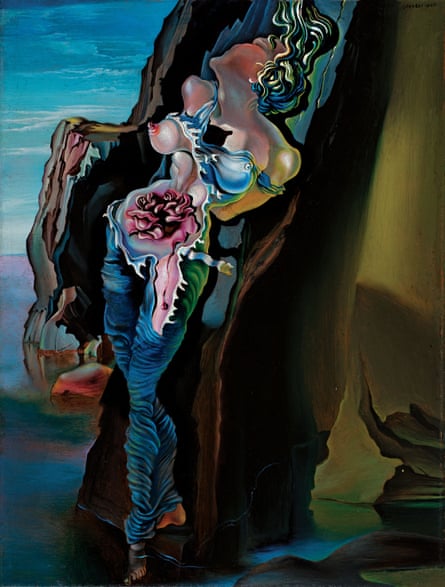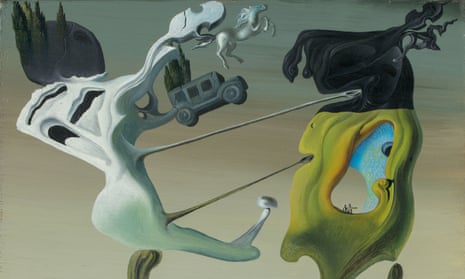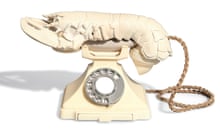Two drama-filled Salvador Dalí paintings, sold by the artist direct to an Argentinian countess in the 1930s, have been rediscovered and are to appear at auction in the UK. The paintings are, Sotheby’s said, important works by the Spanish surrealist going on to the market for the first time.

“These are the kind of painting that I do my job for,” said Thomas Bompard, head of the impressionist and modern art evening sale. “They are a rediscovery. The quality is A plus plus plus ... when you first see them and have to give a price you feel absolutely privileged to be the one to bring these gems to the market for the first time.”
The two works were painted for and acquired by Countess de Cuevas de Vera, nicknamed Tota, who divided her time between Buenos Aires and France and became friends with many artists and cultural figures active in 1920s and 30s Paris, including Luis Buñuel, with whom she had an affair, as well as Dalí, Picasso, and Jean Cocteau.
Bompard said Dalí loved strong women and was easily drawn to the countess, someone who was both rich and extravagant as well as being a feminist and politically engaged. “Tota was a magnet to Dalí.”

Both works are highly charged and packed with symbolism. The earliest, entitled Gradiva (1931), depicts a mythological figure and character from a 1903 novel by Wilhelm Jensen, in which a young archaeologist becomes obsessed by a female figure shown in a Roman bas-relief. It was a story used by Sigmund Freud as a study of the idealisation of beauty and notions of love. Gradiva was also the nickname Dalí gave to his wife, Gala.
The other work is entitled Maison Pour Érotomane (1932), a weird, hallucinatory, work which shows a cello, horse and car apparently emerging from a rock. In the foreground is a man and woman who represent Dalí and his wife.
Bompard said the period when the two works were painted was a time when “Dalí became himself”.
Both of the paintings were acquired by the countess and passed through her family. Gradiva has been lent only once, to an exhibition in Lausanne, Switzerland, in the 1980s; Maison Pour Érotomane has not been seen publicly since the 1930s. Each artwork has an estimated value of between £1.2m and £1.8m and will appear at auction at Sotheby’s, London, on 28 February.








Comments (…)
Sign in or create your Guardian account to join the discussion